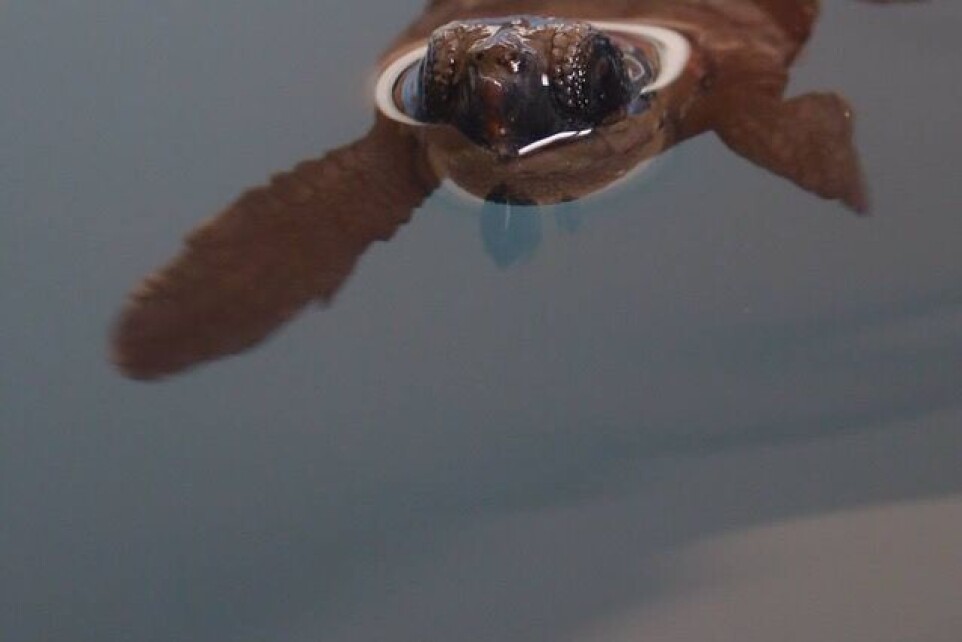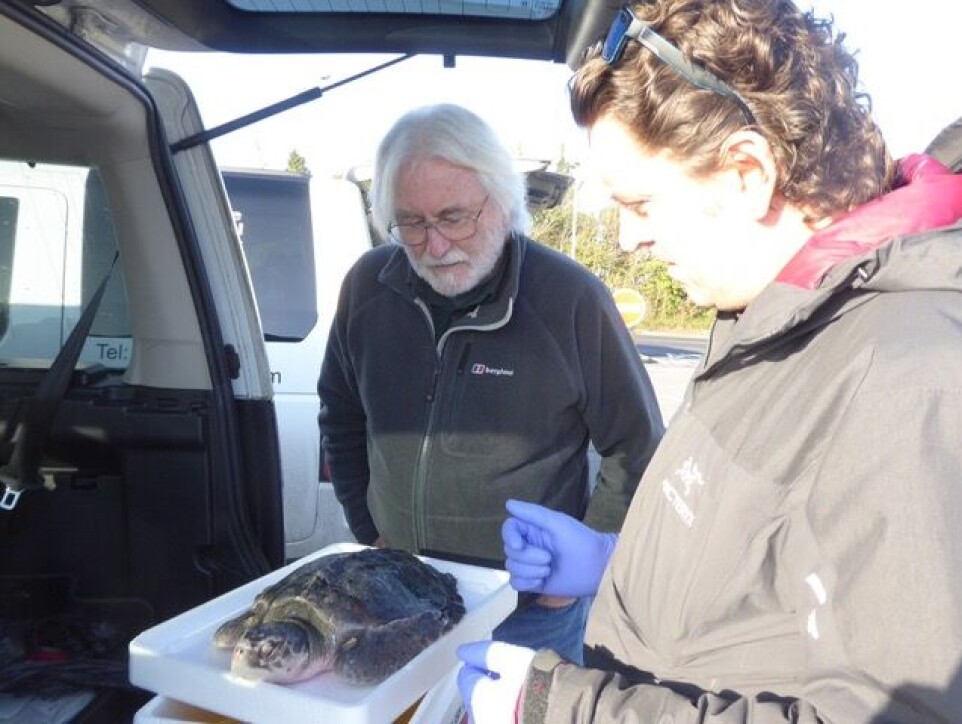THIS ARTICLE/PRESS RELEASE IS PAID FOR AND PRESENTED BY UiT The Arctic University of Norway - read more

Why do we find young sea turtles on cold, northern beaches?
Young sea turtles are regularly found dead or dying on the shores of the UK. Reserachers may have found out why.
Sea turtles are unexpected visitors in northern Europe, as the waters here are generally too cold. While there are only a few turtles most years, in some years, beach-goers in the United Kingdom have reported up to 26 small turtles. People wonder where these unexpected visitors come from, are worried about why they are sick or dead, and what may cause the high number of strandings in certain years.
A research team have tried to find the answer. Due to the efforts of the public in reporting these stranded turtles, they were able to analyse which environmental conditions may cause these incidents.

Too small to track
Sea turtles are at risk from climate change impacts, and it is important to understand how they survive in the ocean at a young age. Because they are too small to track and find in the ocean, simulations can help to better understand what is often referred to as 'the lost years' - a developmental phase that sea turtles spend in the ocean, away from human eyes.
Using an ocean simulation model allowed the researchers to track 'virtual turtles' during this elusive period.

Use ocean for transportation
The simulation model was used to show that ocean currents can transport young turtles from their nesting beaches in the USA across the Atlantic.
Young turtles can swim immediately after reaching the ocean when they are only a few centimeters large, but they rely on ocean currents to transport them over long distances in the ocean, usually to warm waters. But sometimes they end up in lethally cold northern European waters.
Stormy weather
During years when the North Atlantic Oscillation (NAO), an indicator for the 'mode' of the climate, was high, more turtles were reported in the UK. The NAO describes environmental conditions, such as ocean currents and the occurrence of storms, which may be responsible for bringing many turtles to UK beaches.
In addition, near-shore weather may also influence the number of reports, for example in years with more nice weather days, more people on beaches are more likely to find the stranded turtles.

Susceptible to change
An increased understanding of the sea turtle lost years is critical for conservation efforts because the population dynamics of marine species with dispersive juvenile stages can be altered by survival rates of early life stages. These organisms are very susceptible to variations in climatic and oceanic factors.
With climate change causing atmospheric and oceanic conditions to change, it is becoming ever more important to understand how organisms with drifting life stages will be affected by future environmental conditions.
Reference:
Kettemer, et al. 'Oceanic drivers of juveline sea turtle strandings in the UK', Endangered Species Research, 2022. DOI: 10.3354/esr01184 Abstract.
Edited 19.08.22 at 09:56am to add researcher in the byline and three additional photos.

This article/press release is paid for and presented by UiT The Arctic University of Norway
This content is created by UiT's communication staff, who use this platform to communicate science and share results from research with the public. UiT The Arctic University of Norway is one of more than 80 owners of ScienceNorway.no. Read more here.
See more content from UiT:
-
AI can help detect heart diseases more quickly
-
Why does Norway need its own AI law?
-
Researchers reveal a fascinating catch from the depths of the sea
-
How can we protect newborn babies from dangerous germs?
-
This is how AI can contribute to faster treatment of lung cancer
-
Newly identified bacterium named after the Northern Lights is resistant to antibiotics




































